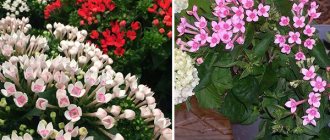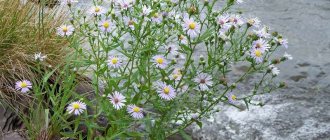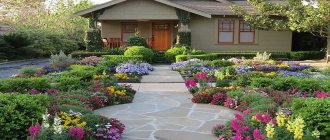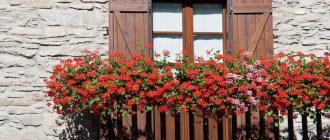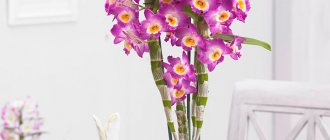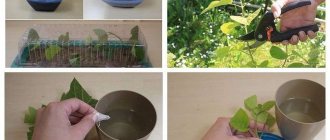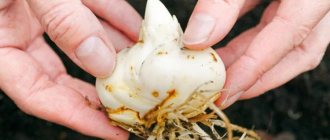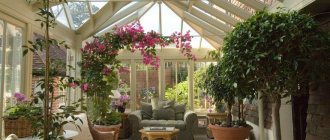Heather is a plant that easily tolerates both hot and cold weather. At the same time, in the cool season it is able to retain its decorative properties.
For growing in cold and even frosty conditions, select the simplest, non-elite varieties. The latter require shelter and will not tolerate wintering on an open balcony. Opt for a plant with a bright color, such as purple. Against the background of white snow, the contrast will be especially noticeable.
You can buy heather at any time of the year, but in autumn it is especially beautiful: from August to November the plant is covered with bright small flowers.
- House plants
7 popular plants that rarely survive at home
Iberis evergreen
This is a beautiful and unpretentious evergreen plant. During flowering, the bush looks simply amazing, as it is densely dotted with snow-white flowers. This plant can tolerate frosts down to 30 degrees, so it is not necessary to cover it for the winter. Iberis evergreen feels good both in the sun and in semi-shaded places.
It blooms in May and blooms for 3 weeks. Iberis looks beautiful from spring to autumn. After flowering, green bushes remain.
Iberis can grow on any soil, even poor and rocky, as long as it is loose enough. This is a drought-resistant plant, so it does not need frequent watering.
Boxwood
Boxwood is ideal for growing bonsai at home. The bush branches perfectly, lends itself well to shaping, easily tolerates pruning and can grow in a small container. Tolerates drafts and coolness well.
The plant loves diffused light, but during the summer months it needs to be protected from direct sunlight. It is preferable to expose boxwood to the open air in summer. And in winter, organize a room for it with a temperature of no more than +6 degrees. A cool winter will promote further growth of the bush. Boxwood itself is unpretentious, but will not withstand waterlogged soil. From time to time it is necessary to spray the leaves.
Hellebore
These are evergreen and unpretentious perennials that should be planted in August. The plant blooms together with primroses at the same time. The height of the hellebore is within 40 cm.
Nowadays many varieties have been developed with different colors and flower shapes. Hellebores look beautiful against the backdrop of primroses. Even after they bloom, they look good due to their decorative foliage. Hellebores grow best in shaded areas of the garden. They prefer loose and nutritious soil with a neutral pH reaction.
Juniper
Indoor juniper will fit perfectly into any interior. It perfectly refreshes the atmosphere, grows quickly, has beneficial properties, and produces ozone.
For good growth, the shrub requires a lot of fresh air; the temperature should not exceed 20 ° C. In spring, when the air becomes warm and dry, the plant is taken outside. He needs partial shade and coolness.
Coreopsis whorled
This is a very beautiful, unpretentious perennial. It looks like a neat openwork bush. Coreopsis blooms from July to September.
It is better to plant in sunny areas with loose soil, where moisture does not stagnate. At the end of summer, the sprouts take root well in their new location. This is a drought-resistant plant, but for the first time after planting the seedlings, they need to be watered. For the winter, coreopsis is completely pruned.
“We are still friends”: Derevianko commented on the breakup with his wife
The money tree pleases with lush flowering: my secret is in caring for the leaves
Smooth and fresh skin: dermaplaning, or why a woman needs to shave her face
Camellia
A plant with graceful inflorescences of red, pink or white. Combines tenderness and fragility. The maintenance and care of the flower should be considered in advance. For the successful cultivation of an evergreen beauty, it is important to create conditions for it that are as close as possible to those in which the shrub grows in nature. The ideal place in the apartment would be a glassed-in loggia with a continuous flow of fresh air. On the windowsill above the radiator, the flower will die.
In winter, the optimal temperature will be from –10 to +12 degrees, and in summer – from +20 to +25 degrees. Camellia prefers rooms with a lot of light and air. The humidity in the room should be high, it is important to constantly spray the flower. As for the temperature of the water for irrigation, take into account the fact that camellia grows in the cold. Therefore, there is no need to water with warm water.
Basilisk
During flowering, this plant looks like an air cloud. This is an unpretentious flower up to 2 meters high. However, there are also low-growing varieties.
Blooms from June to August. Flowers can be regular or double. The plant prefers sunny places. In the southern regions it is best to plant it in partial shade.
Despite the fact that the plant is moisture-loving, it does not tolerate stagnant moisture in the soil. Basil has a creeping root system, and with proper care the bush grows quickly.
Fuchsia
Fuchsia has cute flowers that look like they are dressed in bright outfits. The plant loves a cool climate, diffused light, rational watering, moist air and responds gratefully to fertilizing and showering. The most suitable place for placing fuchsia would be an open balcony on the east or north-west side. Or a terrace and garden, where there is shelter from direct sunlight and a large flow of fresh air.
It is important to organize the correct conditions for wintering for fuchsia. A bright room with a temperature of +5...+7 degrees is perfect. Then the flower will retain all its foliage. After all, the growth, development and condition of the flower itself depend on good conditions. Fuchsia is allowed to be in a dark cellar, but without leaves. If this is not possible and the flower will spend the winter in a warm place, then in the spring you need to prune it. It is recommended even a little earlier - in mid-February.
Phlox splayed
This plant will delight you with its abundant flowering and wonderful aroma. It does well in sun and partial shade.
If there is little snow, there will be no harvest: December 16 is Ivan the Silent Day
Lost weight: what Sofia Tarasova sacrificed for the sake of “VIA Gra” (new photos)
A Brazilian travels 36 km by bike every day to take his loved one home.
Phlox is unpretentious, but prefers moderate watering. The soil needs to be loose and nutritious. You also need to fertilize periodically.
What plants are suitable for the cold twilight of winter apartments
Winter is a wonderful season, but cold temperatures can be a little difficult for indoor plants. There is no need to despair. There are many varieties of plants that can withstand the cold in your home. During the autumn and winter months, many apartments become unfavorable environments for green pets. Some rooms are drafty, others are very cold, the air is usually dry, and the sunlight from the windows is less natural.
Falling temperatures and colder climates may cause some plants to suffer, but don't give up on the beauty they bring to your home. There are a huge number of fauna that can withstand even very cold and gloomy conditions, filling the house with summer colors.
Plants that are hardy in cold apartments include cactus, hydrangea, oleander, primrose, pelargonium, fuchsia, cyclamen, camellia and Crassulaceae. For their comfort, 11 C is enough in winter. So far we have only talked about temperature, but there are other factors that need to be taken into account.
Just because the temperature has dropped, a nice, fresh breeze can make the plant "feel" much cooler than it actually is.
The secret to helping plants survive winter involves care routines tailored to the growing preferences of a particular species.
Low indoor plants with a deep dormant period are best tolerated. These include tuberous plants that shed their leaves in winter. These plants should be kept in the dark and at low temperatures in winter, up to 15 degrees. Plants brought to us from the subtropics need coolness in winter. These include laurel, myrtle, and palm trees. They winter well even at temperatures of 6 degrees. Pelargonium or fuchsia are kept at a temperature of 8-10 degrees in winter; even a decrease to 4-6 degrees will not harm them at all. Moreover, at a temperature above 15, they will get sick.
Plants with leathery, thick and smooth leaf blades are suitable for cold and dry apartments. Abelias, gardenias, stephanotis prefer 15-17 degrees. Camellias and azaleas grow at 10-12 degrees in winter. Cyclamen need a temperature of 7 degrees, but bright lighting.
Aloe
Aloe today can offer a considerable selection of shapes and colors. But both tree-like species, hybrids growing in the form of compact rosettes, and the beloved Aloe Vera with its long fleshy leaves are distinguished by their ability to be content with minimal conditions. Not a single aloe is afraid of drafts. If temperatures remain within the recommended range for a particular species, they will not be affected by an open window.
Aloe adapts well to different lighting, requires minimal care, and easily forgives mistakes. Excessive watering and overfeeding are the main enemies of this unique succulent.
Aloe. © Azra Magazin
Office decoration
It is necessary to grow flowers in the office, since there are a lot of computers and working people there. But sometimes there is no one to care for the plants due to constant employment. And on weekends the office is generally closed and there is no one to care for the seedlings.
Plants that do not require frequent spraying and regular watering are suitable for the office.
Some of the Cold Tolerant Houseplants
Aloe - This succulent with elongated, pointed leaves is endowed with medicinal properties. It reaches 1 meter and looks very impressive. Popular aloe vera grows great in cold areas.
English Ivy - The showiness of ivy transforms an apartment and creates a pleasant feeling. The plant enjoys moist soil and cooler temperature conditions in the home.
Aspidistra is an incredibly hardy houseplant that thrives even if neglected. It can withstand poor light, infrequent watering and low temperatures.
Simply place your plant in a pot and water thoroughly, allowing it to dry out between waterings. If the leaves turn yellow, stop being so generous with water! This plant thrives in average humidity and temperature.
Aglaonema is an almost perfect houseplant, great for a north window, but can grow in other places, just not in direct sunlight. The plant tolerates low humidity but is toxic and should be kept away from pets.
